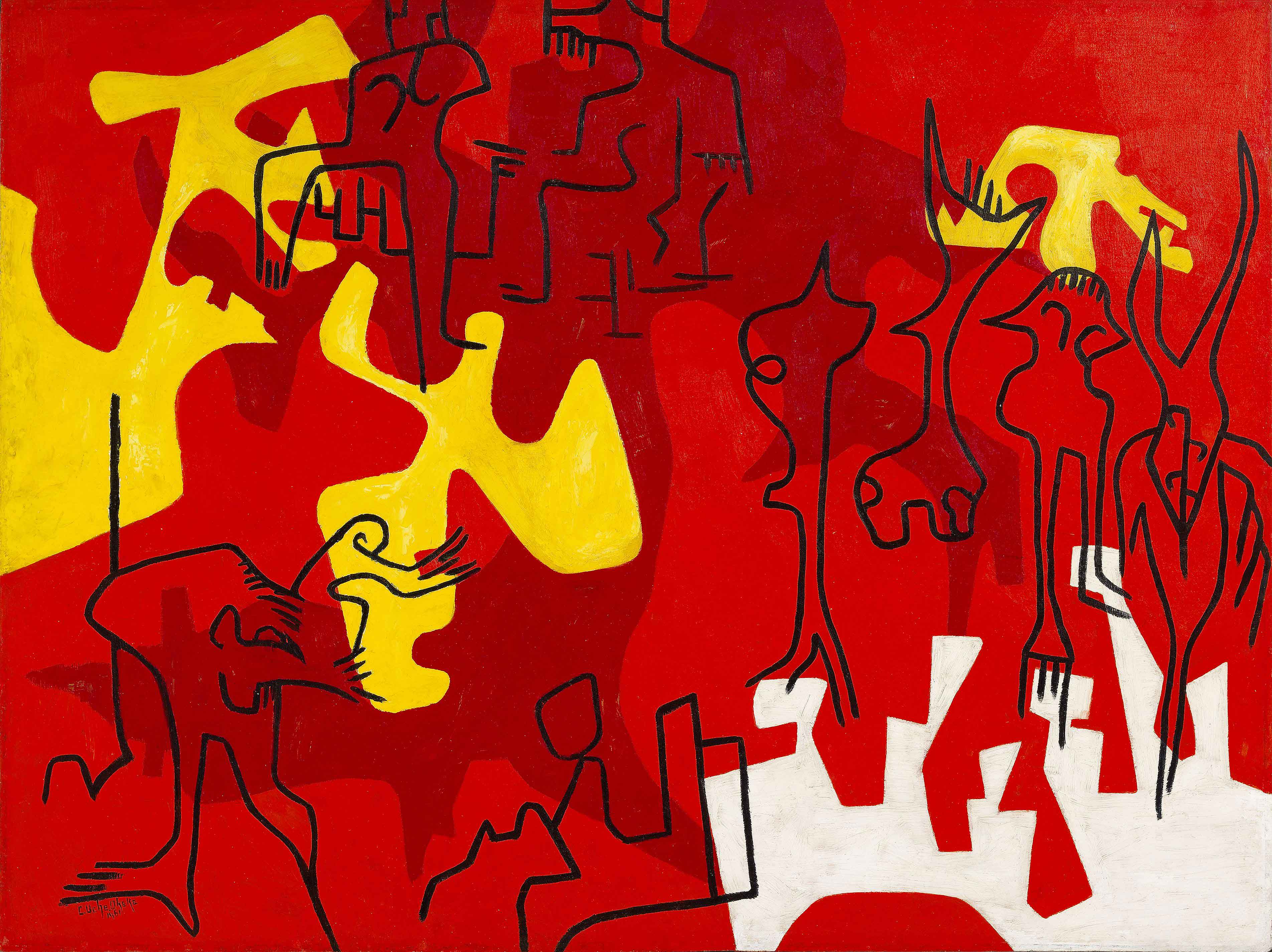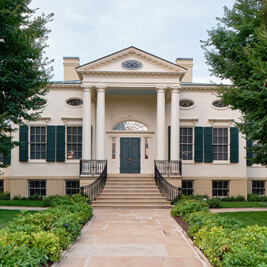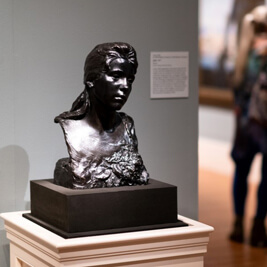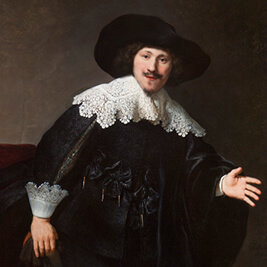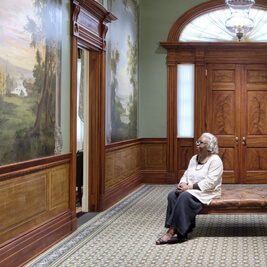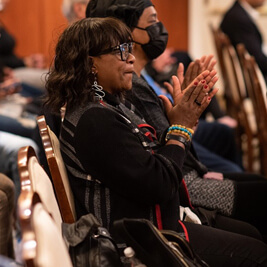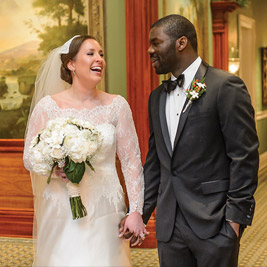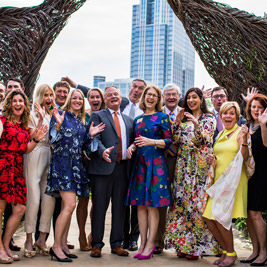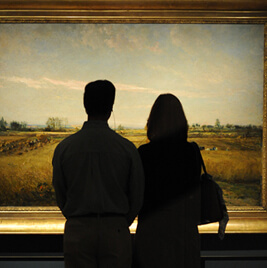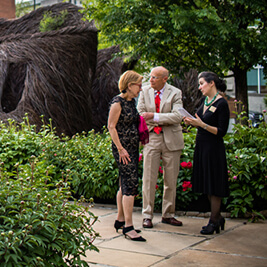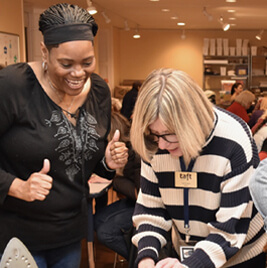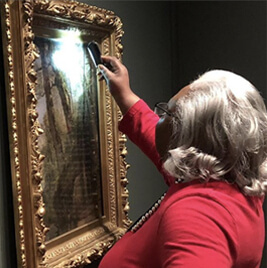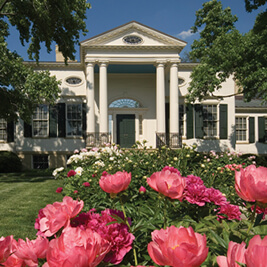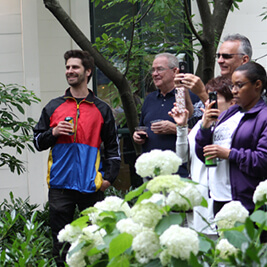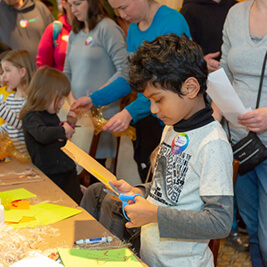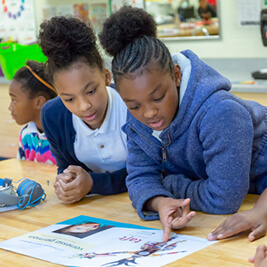- Do + See
- Dine + Host
- Give + Join
- Educate + Learn
5 Must-See Works from African Modernism in America
by Ann Glasscock, Associate Curator
Discover these works and more in African Modernism in America, on view February 9–May 19, 2024.
Peter Clarke (South African, 1929–2014), That Evening Sun Goes Down, 1960, gouache on paper, 21 1/2 x 17 in. Fisk University Galleries, Nashville, Gift of the Harmon Foundation, 1991.313, © 2022 Peter Edward Clarke / DALRO, Johannesburg / Artists Rights Society (ARS), New York, Courtesy American Federation of Arts, Funding for the conservation of this artwork was generously provided through a grant from the Bank of America Conservation Project
David C. Driskell first encountered the work of Peter Clarke in the exhibitions and publications produced by the Harmon Foundation in the early 1960s. The two artists later met in Cape Town in 1972, and the next year Driskell invited Clarke for a residency at Fisk University. Although the social conditions of Black life in apartheid-era South Africa, which are reflected in the rigid and constraining vectors of color and elongated figures of Clarke’s paintings, resonated with Driskell’s experience growing up in segregated America, Driskell found deeper meaning in the South African artist’s “universal language of form.” Driskell wrote of Clarke and his practice, “He is aware of his caste in an imperfect society, but his art is greater than the cast artificially made for him.”
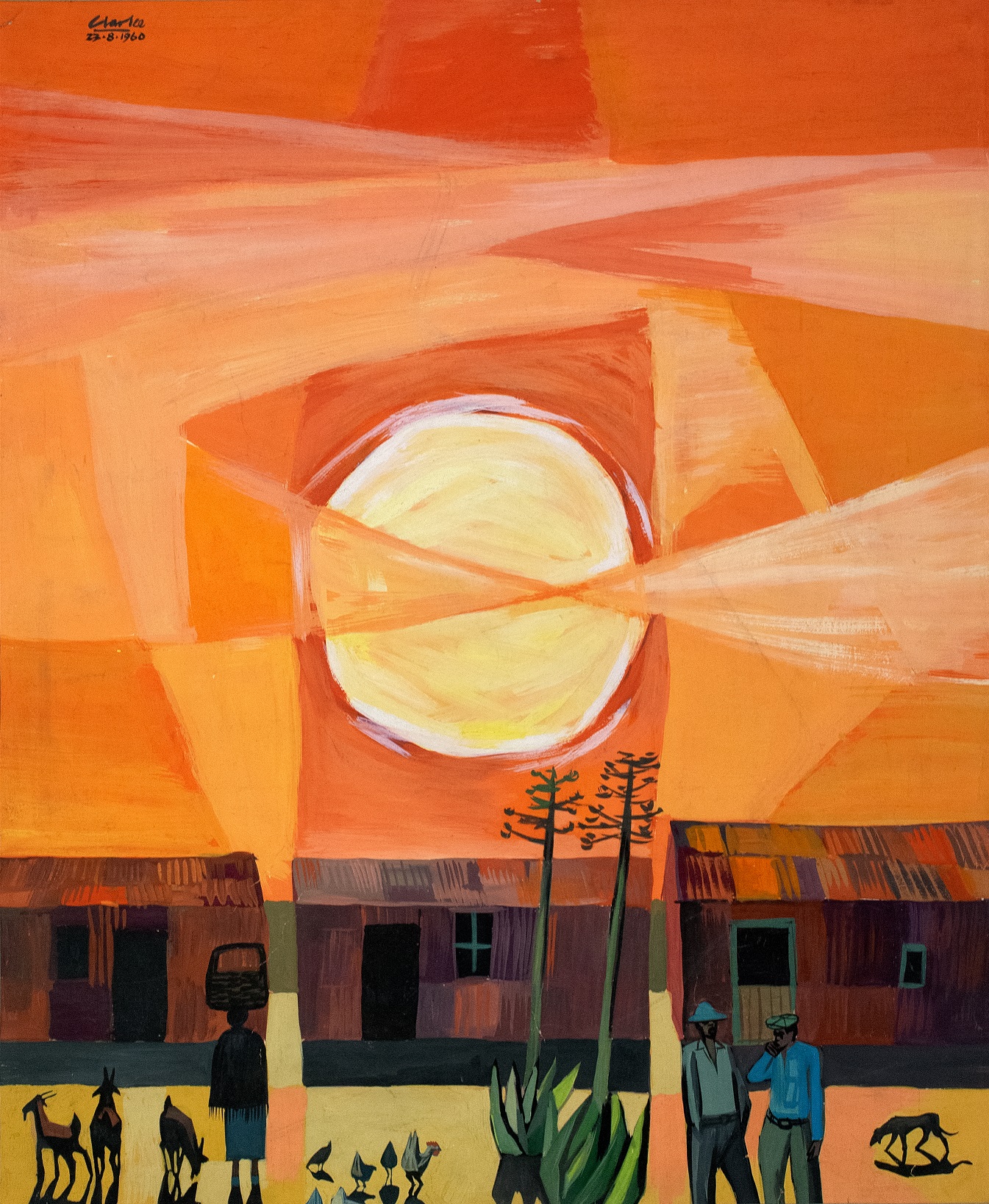
Ibrahim El-Salahi (Sudanese, born 1930), Vision of the Tomb, 1965, oil on canvas, 36 x 36 in. Collection of The Africa Center, New York, 2008.2.1, Photograph by Jerry L. Thompson, © Ibrahim El-Salahi, All rights reserved, ARS, NY 2022, Courtesy Vigo Gallery and American Federation of Arts
Ibrahim El-Salahi likely painted Vision of the Tomb in New York while residing in the city as a Rockefeller Fellow. In 1967, Museum of Modern Art curator Dorothy Miller recommended that David Rockefeller purchase it for the Chase Manhattan Bank art collection. The work demonstrates El-Salahi’s pioneering development of calligraphic modernism, which draws upon an expansive visual vocabulary informed by his upbringing in Sudan and his time spent in Mexico, Peru, Brazil, the United States, London, and Paris in the early 1960s.
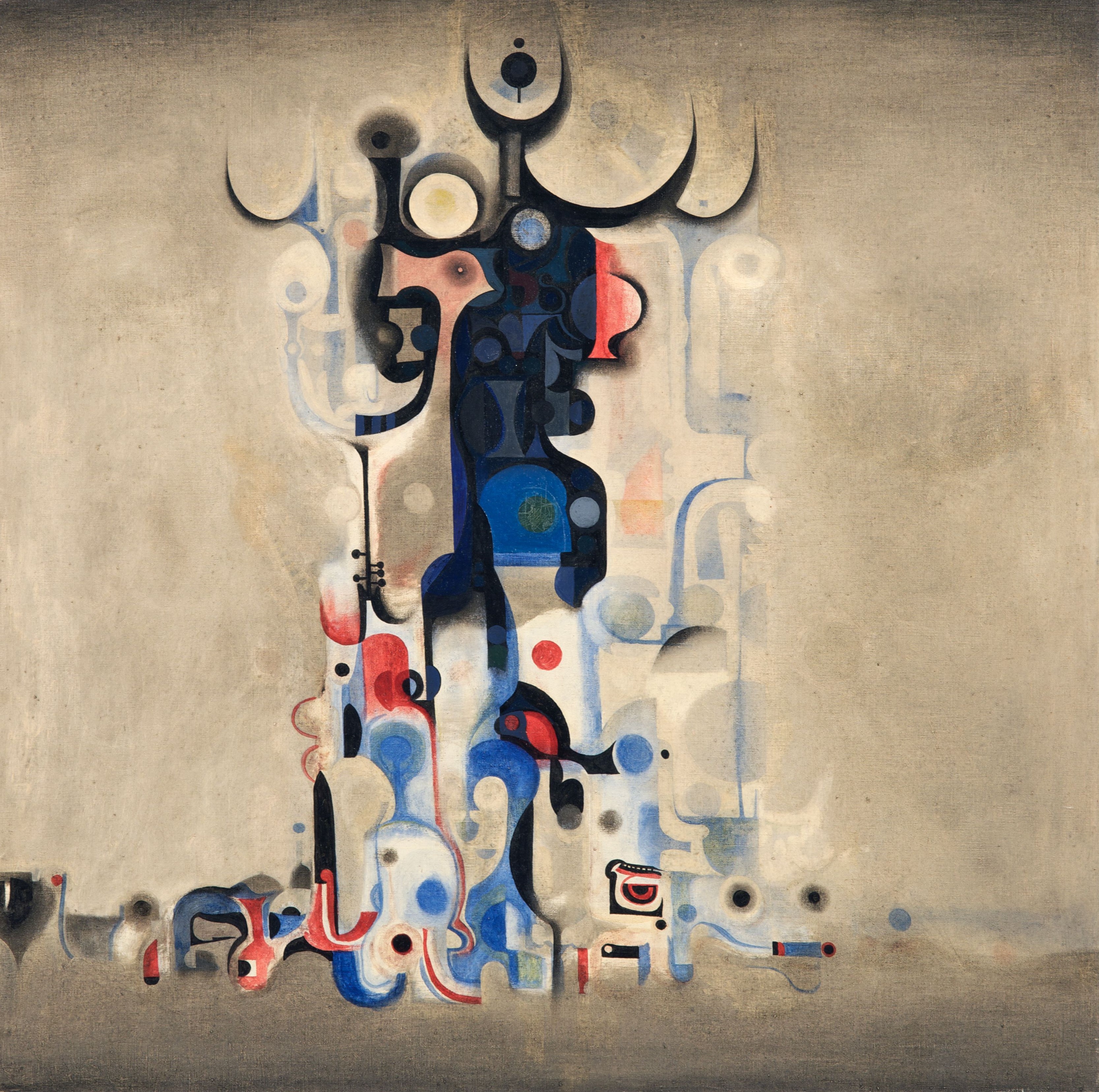
-
Ben Enwonwu (Nigerian, 1917–1994), Head of Samson Imade, about 1949, ebony, 13 in. Fisk University Galleries, Nashville, Gift of the Harmon Foundation, 1991.1234, Courtesy The Ben Enwonwu Foundation and American Federation of Arts
This intimate and precisely carved portrait head by internationally acclaimed Nigerian modernist Ben Enwonwu represents Samson Imade, a member of the royal wood and ivory carving guild of Nigeria’s Benin Kingdom. The men met when Enwonwu returned to Nigeria in the late 1940s after studying at London’s Slade School of Fine Art. The lifelike portrait conveys Enwonwu’s growing ability to “twist the wood, stone or bronze to obey my feelings.” Working in ebony, a typical medium for Benin carvers, Enwonwu commemorated a Nigerian craftsman and his trade.
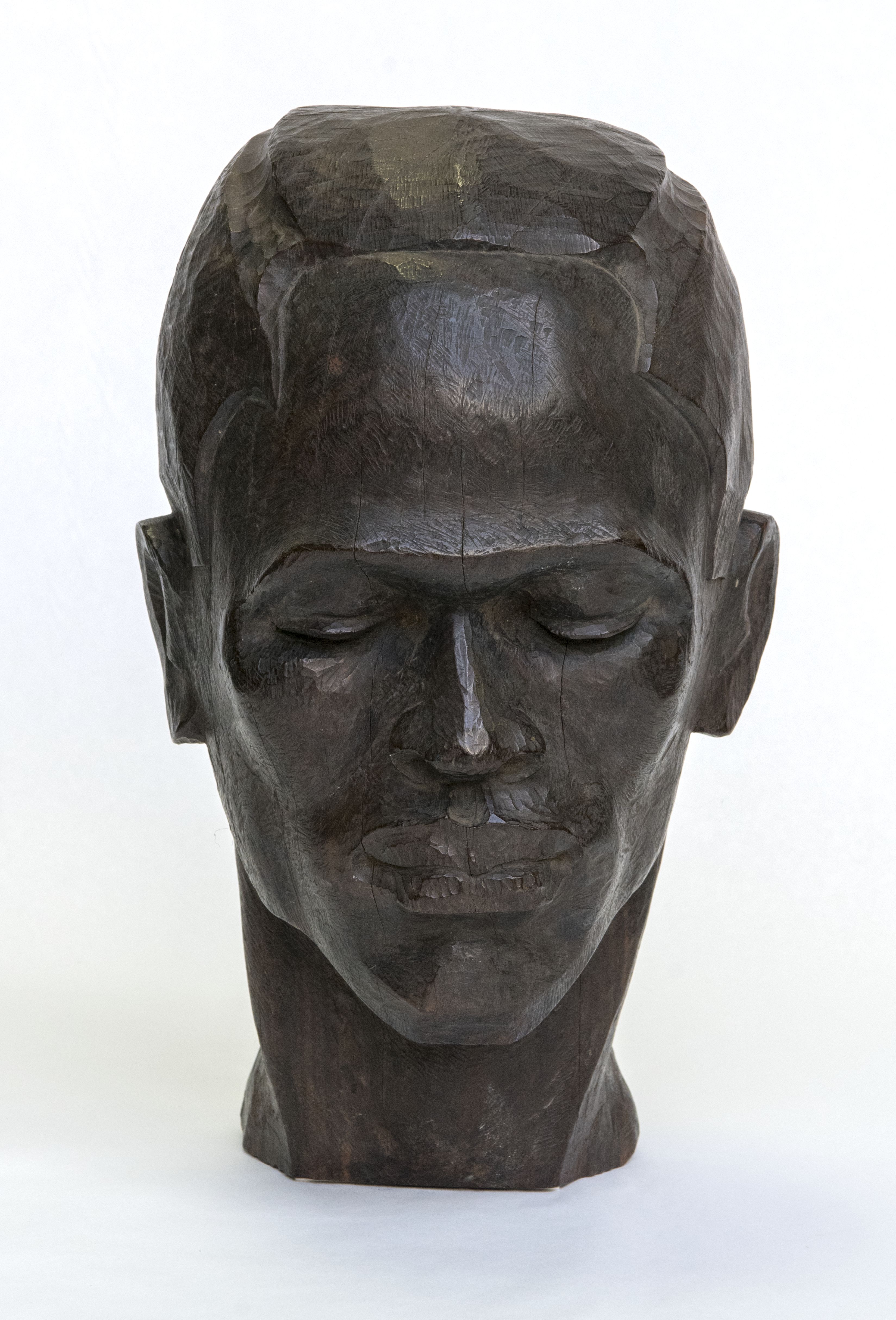
-
Yusuf Grillo (Nigerian, 1934–2021), Untitled (Yoruba Woman), about 1960s, oil on canvas, 48 x 30 in., © Yusuf Grillo, Courtesy Mimi Wolford and American Federation of Arts
In his untitled canvas, Yusuf Grillo used his typically stylized figuration and angular planes of color to represent an elegant Yoruba woman in dazzlingly vibrant cobalt blue. Grillo explored volumetric form in his almost architectural compositions, revealing his longstanding interest in mathematics and the art of the early European avant-garde, notably Pablo Picasso and Amedeo Modigliani. Grillo corresponded with Evelyn S. Brown, assistant director of the Harmon Foundation, in the early 1960s, eventually sending Yoruba Bride, a painting stylistically similar to this example, to New York.
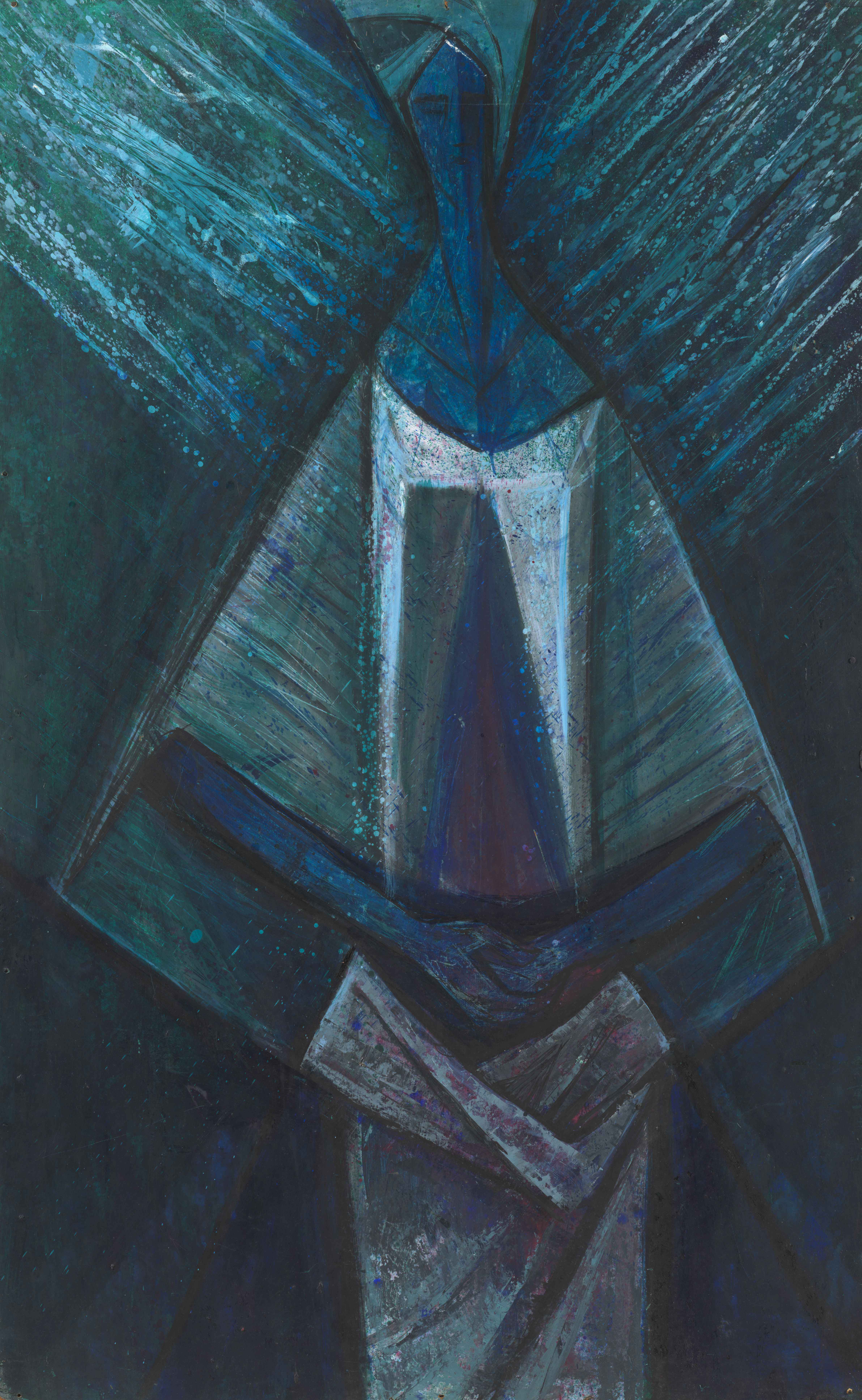
-
Uche Okeke (Nigerian, 1933–2016), Ana Mmuo (Land of the Dead), oil on board, 36 1/16 x 48 in. National Museum of African Art, Smithsonian Institution, Gift of Joanne B. Eicher and Cynthia, Carolyn Ngozi, and Diana Eicher, 97-3-1, © 1961 Uche Okeke, Photograph by Franko Khoury, Courtesy Professor Uche Okeke Legacy Limited and American Federation of Arts
Uche Okeke and Demas Nwoko showed their paintings Folly (on display nearby) and Ana Mmuo in a joint exhibition to inaugurate the gallery at the Mbari Artists and Writers Club in Ibadan, Nigeria, in 1961. Ana Mmuo (Land of the Dead) embodies Okeke and the Art Society’s aesthetic theory of natural synthesis, as it demonstrates Okeke’s early experiments with uli—a form of wall and body painting, practiced primarily by Igbo women in southeastern Nigeria, that is based on sinuous abstract forms derived from nature. Here, Okeke took a cue from uli’s linearity and use of negative space to create abstracted versions of masquerades performed at funerals.
